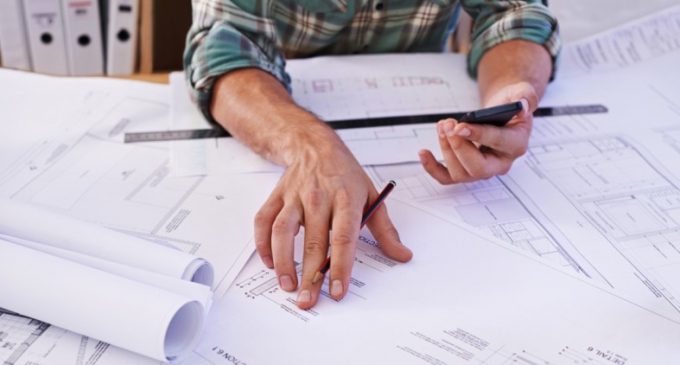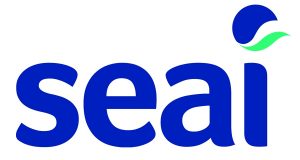SEAI’s EXEED Certification Helps Businesses Cut Costs and Reduce Energy Consumption

Businesses, large and small, as well as public bodies are achieving energy savings with support from the Sustainable Energy Authority of Ireland (SEAI). SEAI’s EXEED (Excellence in Energy Efficient Design) certification programme is proving to have a real impact across a number of sectors. EXEED encourages innovation in how we design and manage projects and is driving the adoption of longer-term solutions to the energy challenges we face. The benefit of EXEED is that energy performance is considered at the very beginning of the design of a new build or major upgrade project, reducing energy consumption and operational costs for the lifetime of the building.
In addition, SEAI support up to €500,000 per year to businesses or public bodies applying EXEED in the design of projects.
 SEAI EXEED, Jim Gannon, CEO of SEAI, comments: “SEAI is already supporting over 70 businesses in achieving EXEED certification and significantly reducing their energy consumption. Last year, SEAI invested €1.6 million in EXEED projects ranging from educational facilities, to pharmaceutical companies to public buildings. Projects that consider energy performance and energy management at the design stage can save up to 30% in energy use and typically save on capital expenditure for new investments.”
SEAI EXEED, Jim Gannon, CEO of SEAI, comments: “SEAI is already supporting over 70 businesses in achieving EXEED certification and significantly reducing their energy consumption. Last year, SEAI invested €1.6 million in EXEED projects ranging from educational facilities, to pharmaceutical companies to public buildings. Projects that consider energy performance and energy management at the design stage can save up to 30% in energy use and typically save on capital expenditure for new investments.”
SEAI has highlighted a number of project examples from the EXEED programme:
Dublin Airport
Dublin Airport Authority (DAA) has achieved savings of 80% on its carpark lighting costs by implementing the upgrade using SEAI’s EXEED. Following the lighting and control upgrades, DAA’s electrical savings are almost 964,500 kWh – the equivalent of powering about 1,200 floodlights per annum.
Carpark lighting had been 70% of the airport’s car park energy consumption. They installed 304 LED lights in the multi-storey carparks and 386 in the surface carparks, which can be controlled individually. They are able to change the lighting level to suit the operational need and capacity at a given time. For example, they can turn off lights in certain areas that they do not want customers to use and can enhance lighting in areas that they want to draw customers to. As well as saving energy this has the added benefit of creating a better environment for carpark users. LED lights need less maintenance and have a longer life than traditional lights. The control systems have been extremely successful and would not have been a technology they would have explored without having taken a design-led approach.
DAA received grant funding through SEAI’s EXEED certification programme. The funding was a big influence in deciding to take a design-led approach to the project.
Martin Mc Gonagle, Asset Care Head of Energy, Environment and Utilities, DAA commented on the experience of using a design-led approach for energy saving projects: “We approach energy projects differently, and it is a good way of thinking. It is an intensive process, but a worthwhile one. You begin to question everything. We have received really positive feedback from carpark operations on the new system. People are becoming more aware of the climate and the environment and it is important for companies to take action where they can to reduce the impact of their operations.”
Johnson & Johnson VisionCare
Johnson and Johnson VisionCare have completed building a new gym and medical centre which has resulted in the new facility being 25% more energy efficient than current building regulations. The centre is on its Limerick site and is a space for meetings, treatments and fitness for employees. As well as being energy efficient, the building is also comfortable and bright for employees using the facility.
They did a review of where they would use energy and how they could avoid energy use as much as possible. It was important to find ways to increase natural daylight and control energy and water use. They used a fabric first approach, focusing on how they could reduce infiltration and thermal bridging. Some of the technologies they installed include:
- An air source heat pump heats the water for the showers, which are a big energy user.
- A CO2 sensor on the return duct of the HVAC system gives an estimate of how many people are in the building. When it senses that there are more people it increases air flow rates and the fans reduce their speed if there are less people in the facility.
- The LED lights have occupancy sensors, so the lighting is all automatic.
Paul Walsh, Energy and Sustainability Lead at Johnson and Johnson, recognises the benefits of introducing energy efficiency into the design of a project: “SEAI’s EXEED provided an opportunity to use a design-led approach through a structured programme. The grant was a motivator in considering EXEED in the beginning. You have to be prepared for the process which can be challenging. But the results have been incredible. We have seen substantial cost and energy savings. We have seen first-hand the importance of considering energy-use in the building at design stage and a key learning for us is to engage early. We will be using this approach in energy projects for Johnson and Johnson VisionCare going forward.”
Monasterboice Inn
The Monasterboice Inn has recently extended its premises by 25%, while at the same time reducing energy costs. They constructed a new conference centre extension and dramatically upgraded the energy efficiency of their premises using SEAI’s EXEED.
They designed the new conference centre to maximise natural daylight and provide an attractive bright space. They installed high grade insulation throughout the building, and made the building as airtight as possible. They installed Triple-A glazed windows. Although initially this resulted in a higher build cost, they now have a more comfortable building that is cheaper to run.
The old gas boilers were replaced with heat pumps. The heat pumps provide heating and cooling to the building. Energy is extracted from an onsite stream. They have smart controls that manage the various sources of heat. This system is responsive and provides much better control.
The challenge in the beginning was to get all of the design team on board. Their EXEED consultant was key in this. He held meetings with all involved before the build, ensuring that they understood the concept of a design-led approach.
The payback on this project is expected to be three and a half years. Commenting on the future plans for improving energy performance, Roseanne Donegan, owner of the Monasterboice Inn says: “We have seen the results of a design-led approach and want to continue improving the energy performance and environmental credentials of our building. We have plans to build rooms in the same eco-friendly fashion taking account of building orientation and natural sources of power, right down to the lights being fitted to the correct lux level. All of our refrigeration units in the kitchen and the bar will be cooled from the stream in the near future. The customer feedback has been very positive, from an aesthetic and comfort point of view.”
SEAI’s EXEED funding is open to all public and private organisations who are planning energy investment projects of any scale or complexity. Applications for 2019 will open early in the year. Please contact exeed@seai.ie to be notified when the date is announced and to start planning your projects.
Visit www.seai.ie for more information on EXEED.


























